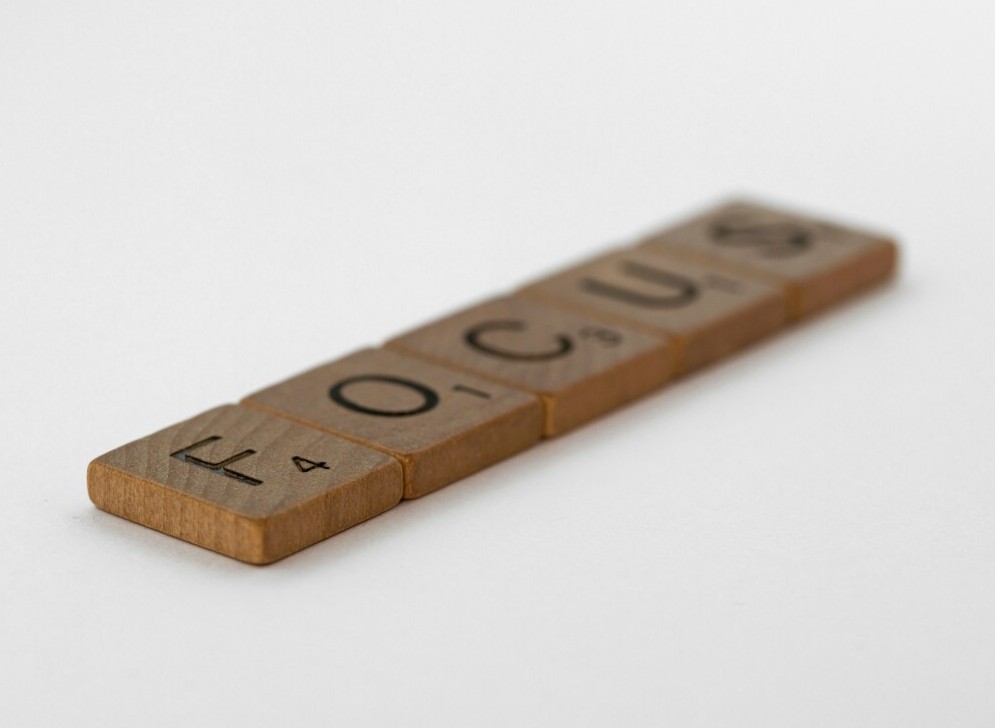How To Recover From A Bad Hole And Stay Focused


Fore! Quick note: a few links here are affiliate links. If you snag gear through them, I earn a small commission — no extra strokes added to your game.
Hitting a bad hole is something every single golfer, from newbies to seasoned pros, has faced at some point. It’s like getting caught in a sudden downpour – unexpected but completely natural! Knowing that even top players stumble can be a real comfort when you’re sitting at that tee, wondering where it went wrong. Don’t worry one bit because the golf viking is here to help you take the edge off of your rough outing on the course.
Take, for instance, folks like Tiger Woods or Phil Mickelson. These legends have had their share of less-than-stellar moments on the course. The difference? They understand that one bad hole doesn’t define their entire game. That’s the beauty of golf, it’s a marathon, not a race. If you make a mistake on one hole, there are seventeen other holes on the course to make up for it.
In fact, statistics show that even the world’s best have off moments. Understanding this can lighten the load on your shoulders, preventing a single slip from snowballing into a full-round decline. Don’t let one bad hole ruin the rest of your round.
The reality is, a bad hole is just that—one isolated incident in a game comprising of up to 18 different playing fields. Recognizing it as such is crucial. So next time you find yourself in a sand trap or sending your ball out of bounds, remember you’re in good company. Every golfer had experienced it, and it’s nothing new to the golf world.
A key takeaway here is embracing the commonality of bad holes can be empowering. It’s a reminder to savor the game as a whole, not just to get bogged down by a single misstep. This mindset sets the stage for improving your focus and resilience throughout the round. With this fresh perspective, you’re ready to tackle what the next hole brings. Golf can be a game of emotions, but how you handle them can make all the difference.
If a bad hole has thrown you off your game, mental resilience is key. Our guide on How to Maintain Focus Over 18 Holes of Golf will give you the mindset tools you need to stay locked in for the rest of your round.

Controlling Emotions: Key to Effective Focus After a Bad Hole
Golf isn’t just a physical game—it’s a mental challenge too. Let’s face it, a bad hole can knock your confidence and mess with your headspace. The trick is to not let those pesky emotions take you for a wild ride. Keeping your cool is essential. You don’t want to keep spiralling downwards, you want to right the ship.
Why does emotional control matter so much? Well, stress or frustration can impact your swing mechanics like nothing else. It can turn your favorite sport into something out of a horror movie. You aren’t swinging at your best when you’re fuming, and that affects your overall game.
Research shows that emotional distress can shake up your motor functions—who knew right? So, keeping those feelings in check isn’t just about staying calm; it’s about maintaining top-notch performance on the course. Your body won’t be able to perform a smooth fluid swing if it’s all tensed up, so relax.
So, how do you hold it together when things go sideways? Breathing exercises work wonders here. A deep breath cues your body to chill, releasing the tension that can build up from a rough hole. Make sure you’re breathing out as if you’re letting go of that hole—it’s like a reset button.
Ever tried visualizing a peaceful beach or a favorite happy place? It sounds a bit out there, but engaging your mind with positive imagery can snap you right back to focus. Plus, it’s not just about glossing over the mishap, cheers to keeping distractions at bay! Think of something positive to break the loop of negative thoughts barraging your brain.
In a nutshell, being the boss of your emotions sets the groundwork for bouncing back stronger, ready to tackle the rest of your round. A strong mindset with focus and an attitude of perseverance can help you power through a bad hole and continue your round with a better headspace.
Sometimes a bad hole happens because of one poor shot—like a slice or a hook. Learn how to correct those errors fast with our Ultimate Guide for How to Fix a Slice.

Reprogramming Competitive Mindset: Shifting Focus
After hitting a rough patch on the course, refocusing isn’t just helpful—it’s essential. Shifting your mental gear from a bad shot to the next opportunity can make all the difference in keeping your game sharp. In golf, the current shot is always the most important shot. So don’t fill your head with thoughts about all your bad shots. Simply focus on the current shot to hit the ball as best you can.
Forget about what just happened; look forward to what’s next. Easier said than done, right? But setting mini-goals for the next few holes can really work. Maybe focus on making each putt count or refining your swing tempo. Having something specific to aim for takes the heat off dwelling on past mistakes. Give yourself an objective to accomplish for the current hole to get your mind off of the last one.
Turning on a positive mindset is like hitting the reset button. For example, instead of thinking of a missed swing as a failure, see it as a lesson. Challenges can turn into stepping stones if you let ’em. So, swap any negative self-talk with something uplifting. A mantra like ‘I learn from every shot’ keeps things moving in the right direction. Acknowledge what went wrong with the shot and use it to understand how to hit the next shot better.
If words aren’t your jam, try a mental cue. Picture a blank slate between holes. The last one is done and dusted. This helps clear the clutter and sets a fresh stage for nailing it on the next hole. Wipe that slate clean so that there’s an empty slate ahead. Every new hole is a fresh start.
Creating this mindset isn’t just about one game—it’s a skill that strengthens with practice. Gets you ready to meet the next shot with anticipation, not dread. So, when you’re backed into a corner after that bad hole, remember: every future shot is a fresh chance to turn things around. So how can we get into that state of focus to truly improve our shot from the last one?
When recovering from a rough hole, putting can make or break your comeback. Learn how to read greens and control distance with our Best Golf Putters for Distance Control guide.

Practical Strategies: Techniques to Reclaim Focus and Improve Performance
Let’s talk about smashing a reset after a bad hole. Bringing back your A-game requires some hands-on tactics. First things first, your stance. You might not believe it, but getting your posture right can work wonders for your swing. Shake off the slump, stand tall, and keep your balance. This will automatically put you in a more focused mood than being slouched down.
Ever heard about golf routines? I’m talking about those little pre-shot habits pros make look easy. A solid routine acts like a mental anchor—something familiar to focus on amidst the chaos. Before you know it, you’ll be lining up your shots like a boss. Give yourself a few practice swings just to get the feel for your swing motion and your body loose again.
Think of moments between holes as time-outs—a chance to breathe, refocus, and regroup. Have a quick stretch or sip some water. This quick reset helps loosen any tightness and gets you back on the ball. If given the chance, take a minute to regroup. Sometimes just taking a time out can get your mind clear again.
Another trick in the bag is mindfulness on the green. It’s all about soaking in the here and now, reducing distractions, and fine-tuning your focus. Try it during practice rounds and see how it carries over to your game day. Soak up that beautiful sunshine, admire the wonder of a well manicured landscape, and relish the moment of being out on the course. Appreciate being outside doing something you love rather than worrying about that double bogey.
Having handy techniques at your disposal not only enhances your current game but boosts your confidence. With continued practice and these strategies, conquering bad holes becomes second nature. Let’s recap how we’re going to get over that stink of a bad hole so we can finish smelling like roses.

Preventive Measures: Building Resilience for Future Challenges
Prepping for future roadblocks on the course transforms any golfer from just surviving to thriving. Start by putting yourself to the test with tricky scenarios during training. Face those dreaded sand traps and water hazards head-on, so when they pop up in your round, you’re more than ready.
Learning from past blunders is like finding a gold mine. Instead of brushing off previous mistakes, take them head-on. Assess what went south and work on strategies to avoid a similar fate. This approach fosters growth and gives birth to resilience. Learn from your mistakes so that you won’t repeat them.
Regular mental training sharpens concentration, ensuring you don’t get caught out by distractions. All it takes is setting aside a few minutes each day to practice focusing techniques, grounding your mentality when it counts. This will build resilience for your golf game.
Ever tried keeping a golf journal? It’s an unexpectedly powerful tool. Jot down experiences from each round, noting down what went well and what tripped you up. Over time, patterns will emerge, giving you insights into areas needing improvement.
Incorporating these preventive measures into your routine not only fortifies you for future challenges but builds lasting confidence. Overcoming hurdles becomes more about strategy and less about stress. I’ll see you out on the golf course, getting primed for the next best shot of your life.
If your bad hole was due to bunker struggles, fixing that skill can save future strokes. Master the sand with Secrets to Mastering Greenside Bunker Shots.


